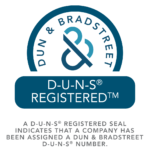A company’s chart of accounts represents the set accounts that will serve to support all of its journal entries. But, contrary to what is commonly applied in companies, the most important factor in the chart of accounts is the detailed and preferably exhaustive description of the nature of each ledger account.
The detailed description of the accounts, often referred to as accounting policies, company accounting handbook or company accounting bible, should provide all kind of journal entries that should be allocated in each account and which journal entries should not be recorded. A good handbook also contains examples of operations and situations to be posted or not on each account.
In this context and considering the large number of business segments and its characteristics, it is impossible to establish a chart of accounts that suits everyone. Thus, a good accounting firm or accounting department should adapt its reality to the needs of each company, avoiding to make their accounting plan rigid.
The minimum structure of a Balance Sheet presented in the Brazilian Accounting Pronunciation (CPC) 26, item 54, allows us to guide the preparation of a chart of accounts for each entity, as shown below:
- Cash and cash equivalents
- customers and other receivables
- stocks
- biological assets
- investment properties
- fixed assets
- Trade and other payables
- Provisions
- Deferred tax assets and liabilities as defined in Technical Pronouncement CPC 32
- Capital
The needs of each business entity will determine the ideal chart of accounts for the managerial and analytical monitoring of its operation, reporting and accounting and financial statements.
A more detailed a chart of account can give better visibility of the entity’s equity and financial situation, obviously taking into consideration the relevance of the analytical and totalizing accounts, avoiding unnecessary redundancies and details.
Another relevant matter in the process of determining the chart of accounts is its direct relationship with the Accounting Bookkeeping and the Tax-Accounting Bookkeeping (ECD and ECF). Their impacts should be well analyzed, especially in the income statement, as they are used to calculate Corporate Income Tax and Social Contribution on Net Income (IRPJ and CSLL).
Here are some steps to be considered for reviewing or drafting your chart of accounts:
• Use experienced professionals who have experienced different situations when making accounting classifications
• Ensure that your company’s accounting manual is being written concurrently with the preparation / revision of your chart of accounts. This will allow a reflection on the nature of each ledger account at the time the chart of accounts is being prepared / revised.
• List all or most of the operations performed by your company (purchase of goods, purchase of assets, contracting services, etc.) and test their accounting in the prepared chart of accounts. You will notice that doubts will arise and will be used as learning to close the accounting understanding of each one.
Count on the Albieri and Associates BPO. Outsource your accounting, tax, payroll and finance routines with those who work with hundreds of clients and across all sectors of the economy. Albieri e Associados is a firm in collaboration with Andersen Global.



